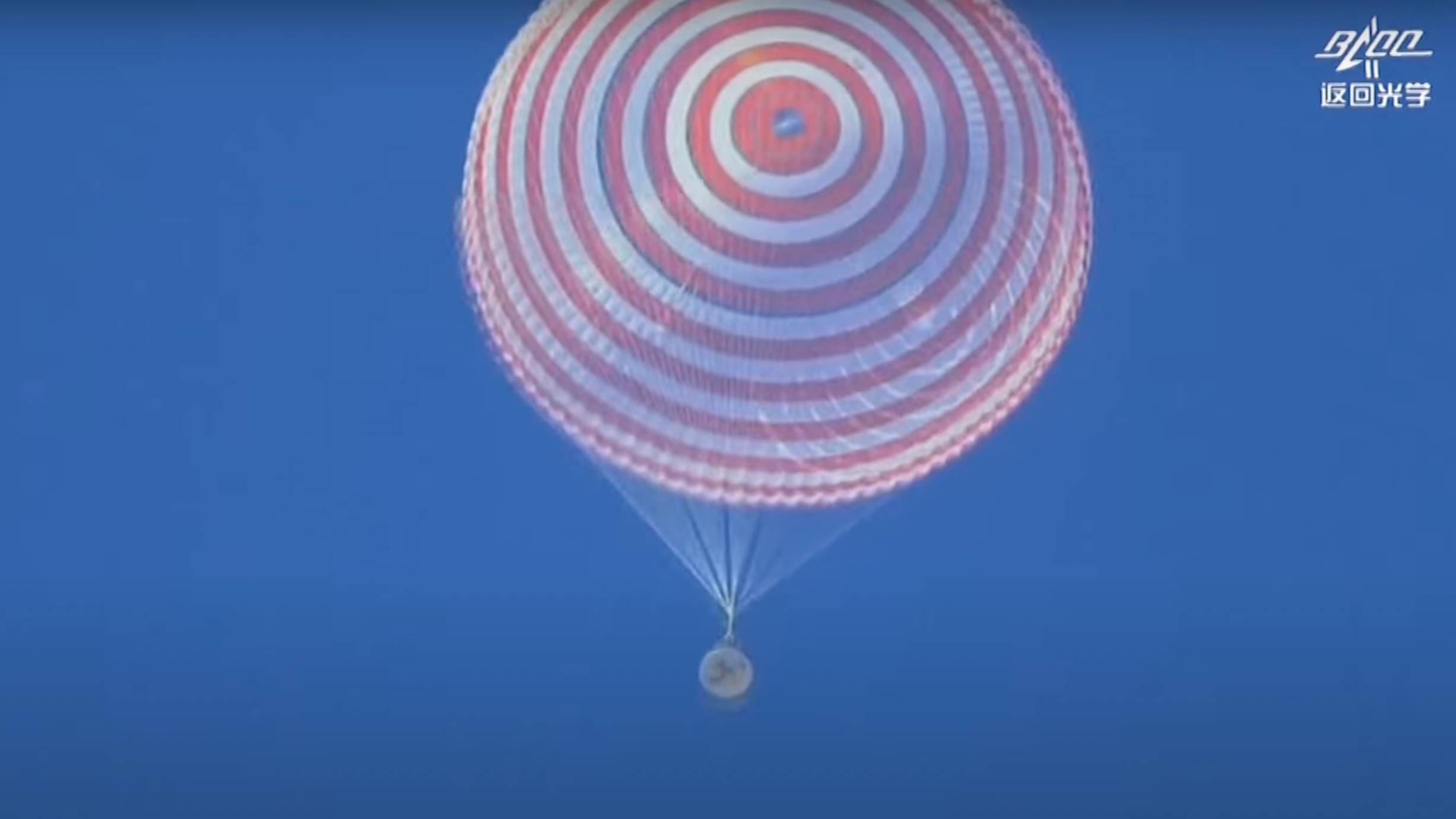Three Chinese astronauts returned to Earth today (April 30) after six months in the final frontier.
The Shenzhou 17 spacecraft touched down under parachutes in the Inner Mongolia Autonomous Region today at 5:46 a.m. EDT (0946 GMT; 5:46 p.m. Beijing time), about nine hours after departing China's Tiangong space station.
All three Shenzhou 17 crewmembers — Tang Hongbo, Tang Shengjie and Jiang Xinlin — are healthy and safe, according to China's state-run Xinhua news agency, which cited the China Manned Space Agency.
Related: China's space station, Tiangong: A complete guide

Shenzhou 17 launched atop a Long March 2F rocket on Oct. 25 and arrived at Tiangong about 6.5 hours later.
The mission was China's 12th astronaut flight overall and the sixth crewed visit to Tiangong, which the nation finished assembling in late 2022.
The Shenzhou 17 trio was also the youngest crew ever to visit Tiangong; on launch day, Tang Hongbo was 48, Tang Shengjie was 34 and Jiang was 35. However, that mantle was just claimed by the astronauts of the Shenzhou 18 mission, which launched last Thursday (April 25): Ye Guangfu, Li Guangsu and Li Cong are just 43, 36 and 34 years old, respectively.
Get the Space.com Newsletter
Breaking space news, the latest updates on rocket launches, skywatching events and more!
The Shenzhou 17 crew had an eventful six months in low Earth orbit. They conducted dozens of scientific experiments, for example, and performed two spacewalks — one apiece in December and March — to repair Tiangong's solar arrays, which had been damaged by debris or micrometeoroid strikes, perhaps both.
In January, the astronauts welcomed to Tiangong the Tianzhou 7 robotic cargo ship, which brought supplies up for them and their Shenzhou 18 successors.
The T-shaped Tiangong consists of three elements: the Tianhe core module and two laboratory modules known as Mengtian and Wentian. The complex is about 20% as massive as the International Space Station, but that may not always be the case: Chinese space officials have expressed interest in launching more modules to Tiangong, which they aim to keep staffed by rotating astronaut crews for at least the next decade.
Join our Space Forums to keep talking space on the latest missions, night sky and more! And if you have a news tip, correction or comment, let us know at: community@space.com.

Michael Wall is a Senior Space Writer with Space.com and joined the team in 2010. He primarily covers exoplanets, spaceflight and military space, but has been known to dabble in the space art beat. His book about the search for alien life, "Out There," was published on Nov. 13, 2018. Before becoming a science writer, Michael worked as a herpetologist and wildlife biologist. He has a Ph.D. in evolutionary biology from the University of Sydney, Australia, a bachelor's degree from the University of Arizona, and a graduate certificate in science writing from the University of California, Santa Cruz. To find out what his latest project is, you can follow Michael on Twitter.
